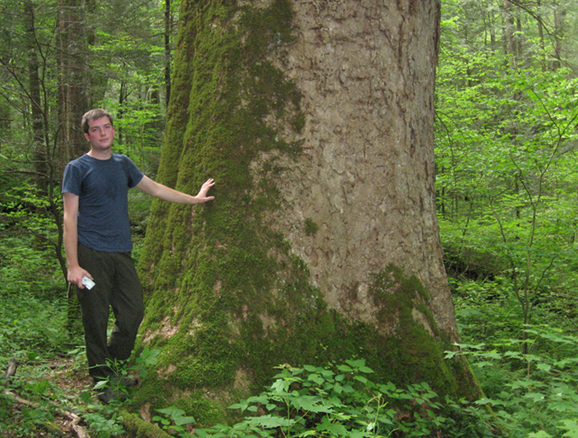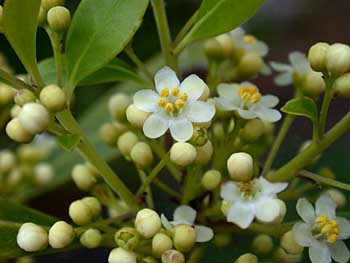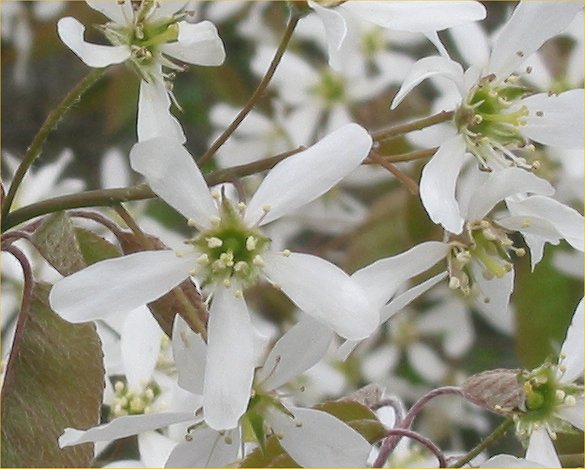A major feature of the NYBG is their conifer area, many of which are rare. Not at all rare, our guest on this post is the native conifer Pinus strobus, the Eastern White Pine, one of the most common evergreens used as a Christmas tree depending on heritage and customs and said to be a source of inspiration for the United States Constitution.
Centuries ago, some say millenia, tribes that inhabited what is now much of eastern North America fought cruel bloody wars. It was a dark and mournful time. According to the legend, the Creator sent a spiritual teacher, the Peacemaker, who canoed from the western shore of Lake Ontario to lead the tribes in fulfilling the Creator's wish that the tribes work toward peace and unity and to inspire the warring tribes to form a league, which we know as the Iroquois Confederacy, the Haudenosaunee, whose primary national symbol is the Great White Pine, serving throughout the Great Law as a metaphor for the Confederacy. Historians believe the Confederacy was established in the 13th or 14th century. Hiawatha was converted by and became a follower of the Peacemaker.
The Great Law of Peace laid out a government "of the people, by the people and for the people" with three branches. The Onondaga, the Firekeepers, are the heart of the Confederacy. The legislative branch is in two parts: Mohawk and Seneca are Elder Brothers who form the upper house, while Oneida and Cayuga are Younger Brothers. The Iroquois Women's Councils settle disputes and judge legal violations. The Peacemaker conferred this important responsibility on women because the first person to accept the message of peace and unity was a Seneca woman, Jigonsaseh, who became known as the Mother of Nations.
Iroquois pine needle basket
Evergreens often symbolize immortality and eternal life because they retain their leaves throughout the winter. To the Iroquois people, the white pine is a symbol of the Great Peace that united their separate nations into an enduring League. The Peace Tree is related to the Tree of Light, a central symbol in Iroquois cosmology. Similar mythological trees are found in European traditions, including the Norse World Tree and the medieval Christian Tree of Life. The World Tree symbolizes the unity of all life, and the struggle of order and growth against chaos and disintegration. The white pine is thus linked to one of the most universal spiritual symbols of the human species.

P. strobus cone, the state flower of Maine
Photo by Keith Kanoti, Maine Forest Service
The tallest native conifer in eastern North America, Pinus strobus is the state tree of Maine and Michigan. The tree's branching rings, added each year, and having only five-needles per cluster make it unique among the eastern pines--see photo below.

Pine needles; inset shows 5-needle clusters

Katherine Lake Photo by Joseph O'Brien, USDA Forest Service
The tallest known specimen, the Boogerman pine, climbed and measured by tape drop from the tops of trees, was just shy of 190 feet; I say 'was' because it lost its top in a 1995 hurricane, and with that lost its status as champion eastern white pine. The current champion, also climbed and measured by tape drop, is in Pennsylvania's Cook Forest State Park, topping the chart at 183.6 feet. Please visit the Eastern Native Tree Society at http://www.nativetreesociety.org/ for more information about champion trees as well as information about trees seen through art, poetry, music, mythology, science, medicine, wood crafts, and
collecting research data for a variety of purposes. The photo below shows a large eastern white pine being measured in a park in Belgium.

Photo by Jean-Pol Grandmont, 2007
White pines prefer well-drained soil and cool, humid climates, but also grow in boggy areas and rocky highlands. In mixed forests it towers over all other trees, including the large hardwoods. It provides food and shelter for many forest birds and small mammals.
The needles of P. strobus have five times as much vitamin C as lemons by weight and can be steeped into a fine tea. The name 'Adirondack' is an Iroquois word meaning 'tree eater'; Native Americans would collect the soft inner bark, the cambium, dry it, and pound it into flour to make pine bark bread in lean times. The young cones were also eaten, stewed with meat. And pine nuts are popular for many recipes even today.
Baked Stuffed Figs with
Goat Cheese and Pine Nuts (Serves 4)
12 ripe figs
150 g (5 1/4 oz.) soft goat cheese
Handful of chives, finely snipped
Few thyme sprigs, leaves stripped
45 mL (3 tbsp) toasted pine nuts
Good quality balsamic vinegar, to drizzle
150 g (5 1/4 oz.) soft goat cheese
Handful of chives, finely snipped
Few thyme sprigs, leaves stripped
45 mL (3 tbsp) toasted pine nuts
Good quality balsamic vinegar, to drizzle
Trim off the tip from each
fig; cut a cross through the top, cutting about halfway down. Squeeze the base
of each fig to open out the top quarters like a flower.
Stuff the figs with goat
cheese; sprinkle with snipped chives, thyme leaves and pine nuts; and drizzle
with balsamic vinegar.
Stand the figs on a large
piece of foil. Bring up the sides and fold together to seal the package (can be prepped to this point in advance). You
can either bake the figs in a hot oven, preheated to 200 C (400 F), or on a
barbecue. They should take about 10 to 12 minutes. Unwrap package and serve
immediately.











 Inky black berries
Inky black berries
 There may be 5-7 petals
There may be 5-7 petals


